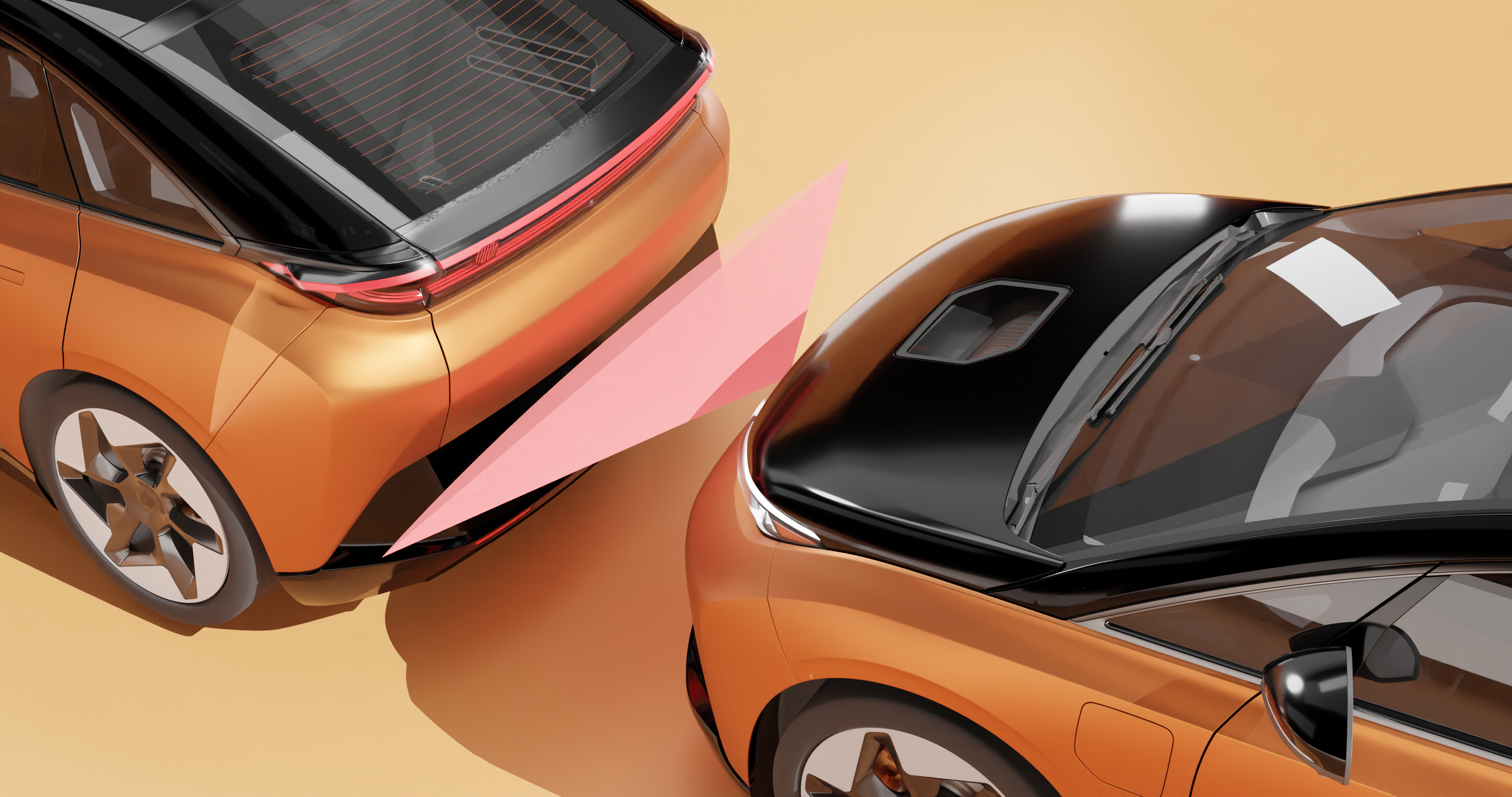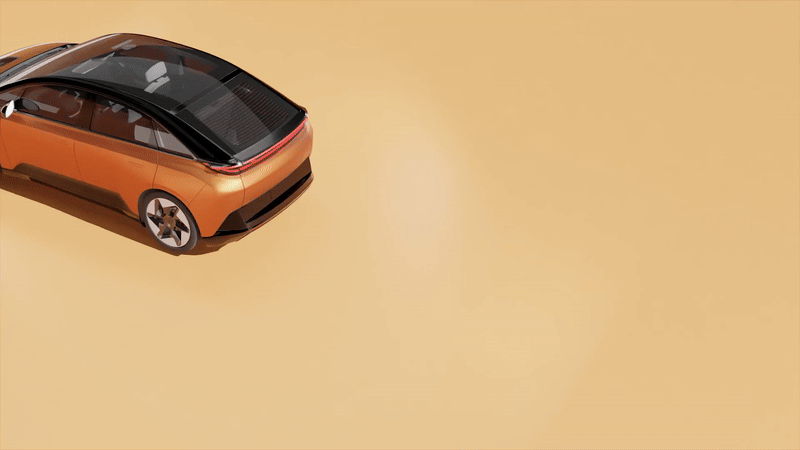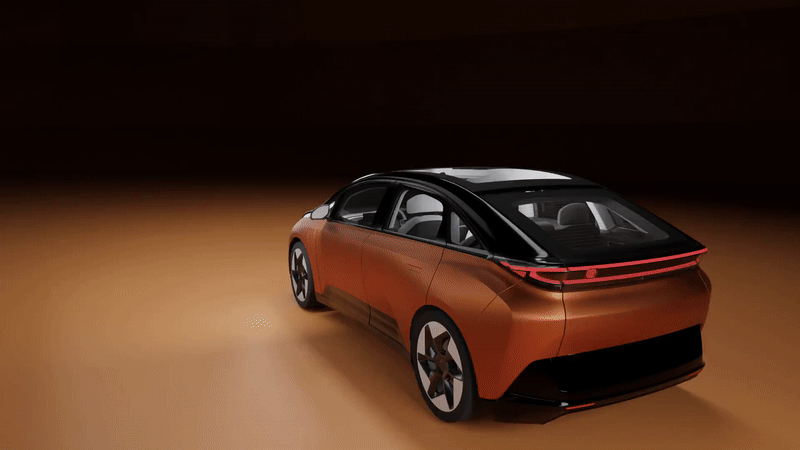
Overview
As part of my work at INDI EV, I created 3D animations to visually communicate the HALO driver-assistance system features of the INDI One. The goal was to craft elegant, informative animations that demonstrate the vehicle’s safety capabilities and interior-exterior design.
This was my first experience creating 3D computer graphics in Blender, requiring me to learn 3D modeling, motion design, and rendering techniques. Through a clean graphic environment and a warm color palette, I developed simple yet effective motion graphics that defined the visual identity of INDI One’s HALO animations.
Problem
The INDI One’s HALO driver-assistance system required a clear and engaging way to showcase its features. The challenge was:
- Effectively communicating complex vehicle safety features in a simple, digestible format.
- Maintaining a clean and branded aesthetic aligned with INDI EV’s design principles.
- Creating high-quality 3D animations with no prior experience in Blender.
Solution
I developed two core animations that illustrate HALO’s safety functionality and the design of the INDI One’s interior and exterior:
- Automatic Emergency Brake Animation – Demonstrates how the INDI One uses front sensors to detect an obstacle and brake automatically before a collision.
- Interior & Exterior Showcase Animation – Highlights the outer body, doors, infotainment, and seats to give viewers a detailed look at the vehicle’s design.
By using Blender for 3D rendering, I was able to create fluid, visually appealing animations that clearly communicate these key features.
Key Features
1. Automatic Emergency Brake Animation
This animation demonstrates how the INDI One’s front sensor detects an oncoming obstacle and applies emergency braking to prevent a collision.
Visual Elements:
-
A top-down perspective showing the INDI One approaching an object.
-
A sensor wave effect radiating from the vehicle, visually representing object detection.
-
A smooth braking transition, emphasizing the HALO system’s automatic response.
-
Minimalist environment to focus on the car and its sensor interaction.

2. Interior & Exterior Showcase Animation
This animation highlights the design and functionality of the INDI One’s interior and exterior.
Visual Elements:
-
360-degree rotation of the INDI One’s exterior, showing the sleek body design.
-
Doors opening seamlessly, demonstrating the car’s accessibility.
-
Interior reveal, with smooth transitions showcasing the infotainment system, seating arrangement, and cabin layout.
-
A consistent warm color palette, aligning with INDI EV’s branding.

Technical Approach
1. Keyframes for Precise Animation Control
I used keyframes to define motion sequences, controlling the position, rotation, and scale of objects over time. Key techniques included:
- Linear interpolation for smooth, continuous movement.
- Ease-in/ease-out transitions to create natural motion for braking and door openings.
2. Constraints for Realistic Movement
To ensure accurate and controlled object interactions, I used:
- Track To constraints for keeping sensor waves oriented toward obstacles.
- Limit Location constraints to keep the car’s braking movement realistic.
3. Motion Paths for Smooth Vehicle Movement
For the Automatic Emergency Brake animation, I created a motion path that dictated the car’s trajectory.
- The car was parented to a path to ensure smooth forward motion.
- The braking effect was timed by adjusting speed and deceleration curves.
4. Drivers for Procedural Motion Adjustments
I used drivers to automate movements based on object properties.
- Sensor waves expanded dynamically as the car approached an obstacle.
- Blender’s Python-based drivers allowed me to control intensity based on distance.
5. Rigging for Mechanical Animation
For the Interior & Exterior Showcase, I applied basic rigging techniques to:
- Animate doors opening/closing smoothly using an armature system.
- Ensure the infotainment screen’s rotation was natural and constrained.
Development Process
1. Research & Planning
Before starting the animations, I researched:
- How existing automotive brands visualize driver-assistance systems.
- Best practices in motion graphics for technical demonstrations.
- 3D animation techniques in Blender for beginners.
2. Learning Blender & Motion Design
Since this was my first time working with 3D animation, I had to learn Blender from scratch. This involved:
- Understanding 3D modeling and camera angles for optimal visual storytelling.
- Mastering keyframe animation for smooth motion sequences.
- Experimenting with lighting and rendering techniques to create a polished final product.
3. Designing the Visual Style
- Maintained a minimalist, clean look to ensure focus on the car’s features.
- Used a warm color palette that aligns with INDI EV’s branding.
- Created consistent motion transitions to make animations feel fluid and natural.
4. Animation & Refinements
Once the initial animations were complete, I worked on:
- Fine-tuning object movement to ensure smooth transitions.
- Optimizing rendering settings for high-quality visuals without excessive processing time.
- Gathering feedback from the design team and iterating based on their input.
Challenges
- Steep learning curve in Blender – As my first 3D animation project, I had to quickly grasp key techniques to achieve professional results.
- Creating realistic motion for sensor detection – Required trial and error to find a balance between abstraction and realism.
- Rendering high-quality animations efficiently – Needed to optimize frame rates and lighting to avoid long render times.
Outcome
The animations successfully illustrated INDI One’s HALO safety features and interior-exterior design, providing the marketing and engineering teams with engaging visuals for presentations and promotions.
Reflections
This project gave me:
- Hands-on experience in 3D animation with Blender.
- A deeper understanding of motion design for automotive technology.
- Practical skills in keyframing, rigging, and procedural animation.
It also laid the groundwork for future automotive motion graphics, opening the door for more advanced visualizations of smart car technologies.
Tools Used: Blender, Figma
Skills Gained: 3D Animation, Motion Design, Rigging, Keyframes, Motion Paths, Constraints, Drivers, Automotive Visualization